[ad_1]
If you plan to travel by bus or train in Vietnam, some things will be a bit different to what you may be used to if you’re from a Western country.
But even though the level of comfort may not always be the highest possible, traveling around Vietnam by public transport is fairly easy.
Vietnam has a great bus network and the Reunification Express railway that runs from Hanoi to Saigon lets you easily cover a lot of distance.
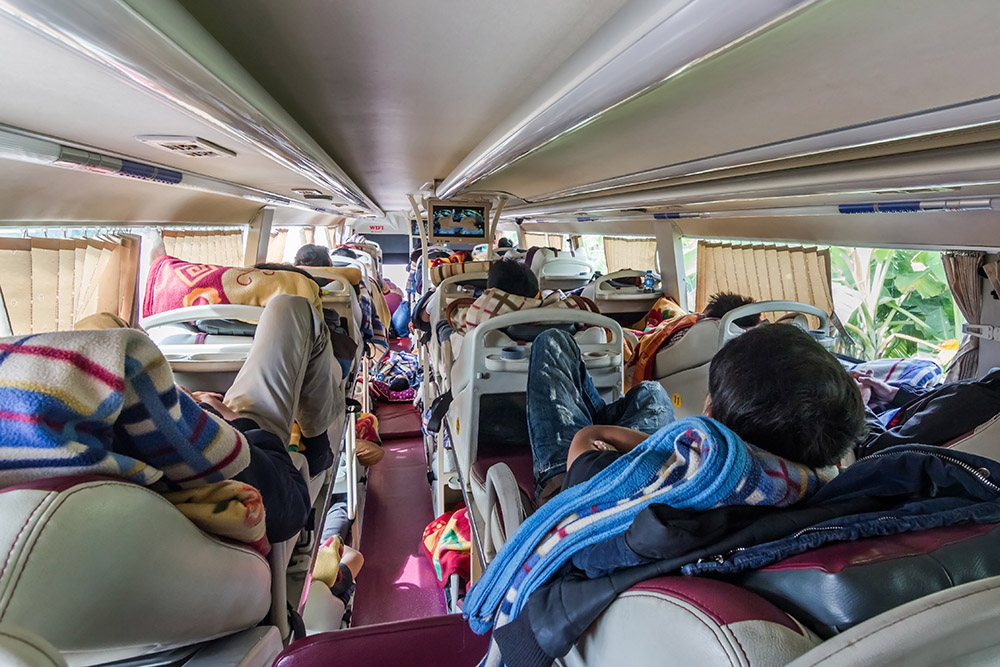
Do keep in mind that local buses can be slow and most night buses have awkward bunk beds with not much leg space. I’ll share more details below on what exactly to expect.
Sometimes it’s worth spending a bit more on a 1st class train ticket or ‘VIP’ bus service for a bit more comfort if you have the budget.
How to book buses in Vietnam
Bus and minivan services in Vietnam are run by hundreds of different companies. This means timetables are not always complete and not every bus can be booked online.
However, more and more bus routes can now be booked easily online, such as through the platform 12Go Asia.
Another common way is to book transportation via your hotel or hostel reception or at any of the small ticket agents that you’ll inevitably find anywhere that tourists go.
It is very typical to find small local travel agencies all over Vietnam, so many travelers simply get their tickets from these shops. These agencies sometimes let you get tickets for services that are not available online. However, they may sometimes also charge a larger commission.
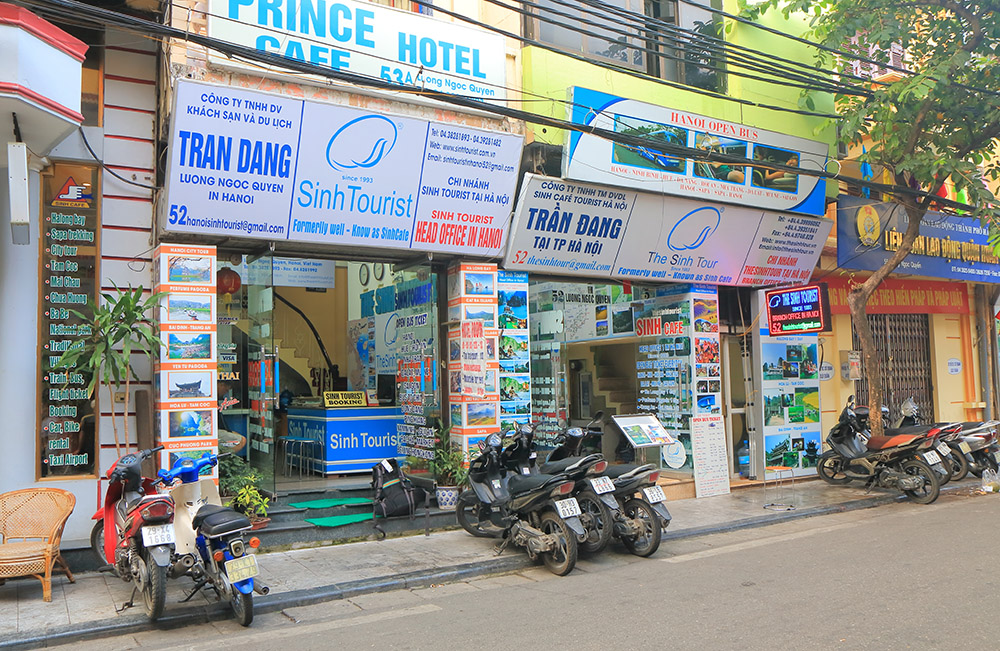
Some sites have made booking online easier in recent years, such as 12Go Asia, Baolau.com and the Vietnamese startup VeXeRe.com, which all accept international payment methods such as PayPal or credit cards.
Do keep in mind there is no centralized booking system in Vietnam.
The sites offering online booking basically have to set up lots of separate partnerships with some of the hundreds of bus operators. When you book on their sites, they often still have to manually call the bus operators to confirm. Unless it specifically says ‘instant confirmation’, you may have to wait a few hours to receive the actual ticket.
So, if you get a notification saying the booking is not yet confirmed, don’t worry as almost always you get a confirmation fairly soon (unless maybe you make a booking in the middle of the night).
There are several ways to book buses in Vietnam:
- Buy tickets directly at bus stations
- Book at a local travel agency
- Use online booking sites (recommended)
The best booking sites for buses, trains, ferries, or minivans in Vietnam are:
How to book trains in Vietnam
The trains in Vietnam do have a central booking system these days, making it very easy to book them. In fact, you can now only book trains online.
Trains are slower and somewhat more expensive than buses but, if you ask me, they’re also much more comfortable. I’ve caught far more sleep on night trains than on any of the buses.
They’re also a cool way to travel!
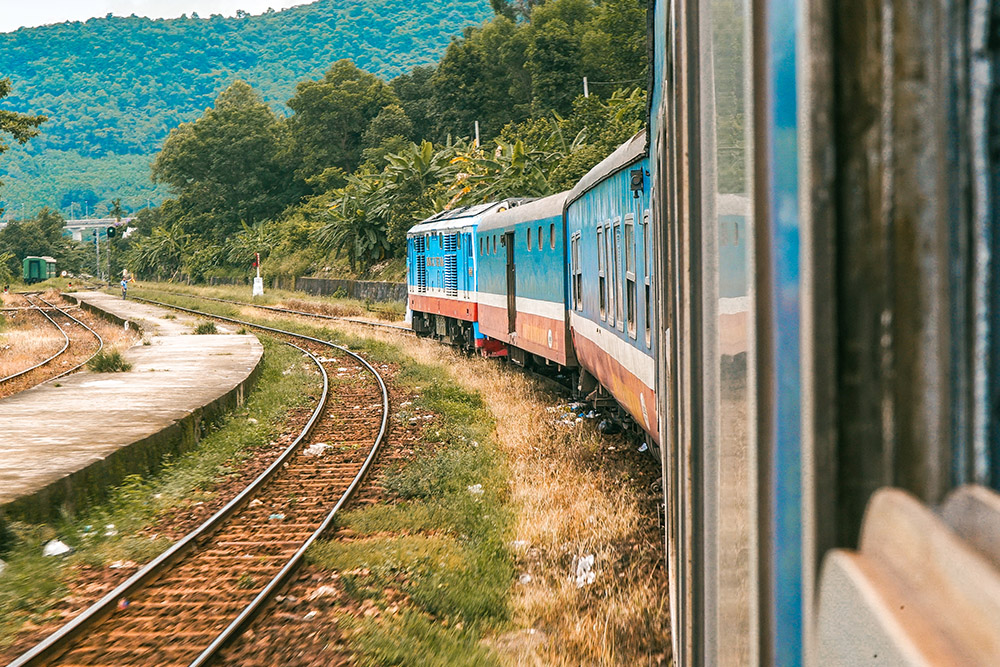
After booking your ticket you’ll be sent a PDF document with a QR code and your carriage and seat number. You can simply show this on your phone to the attendant. Every carriage has its own attendant, so there’s always someone to help you find your seat.
You can book trains in Vietnam with Vietnam Railways but only using Vietnamese payment methods. For foreigners, it’s easiest to book with sites like 12Go Asia or Baolao (which charge a 40,000 dong commission).
It’s best to book trains at least one or two days ahead of time, as they do fill up pretty quickly.
There are no hop-on-hop-off tickets for the train. If you’re going south to north or the other way around, you’ll have to buy individual tickets for each part of your journey.
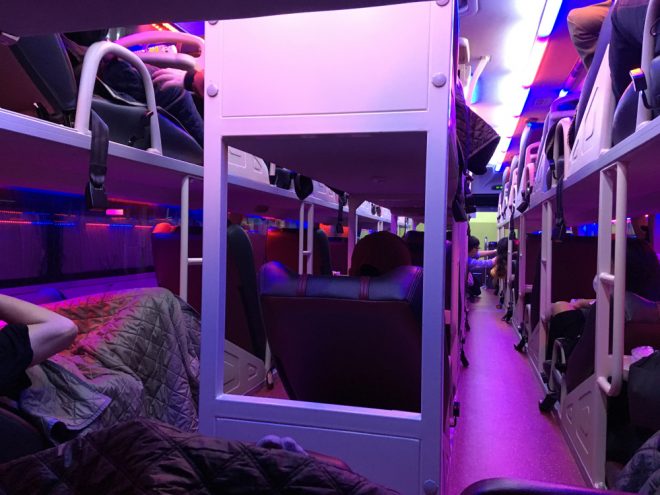
What about night trains & buses?
Because Vietnam is a large country (it’s taller than West Coast USA) and since key tourist sites are spread around the north, center, and south, many travelers choose to travel overland at night, saving some time and potentially money not spent on accommodation.
I think traveling at night in Vietnam is often worth it. It’s very common for backpackers in Vietnam to travel overnight, making use of night buses as well as the Reunification Express running from Hanoi to Saigon which offers a range of sleeper carriages.
The advantages are that you’ll spend fewer waking hours in transit and that you get to save a night’s accommodation. But not all night travel will be that comfortable.
Normal night buses: Vietnamese night buses typically have three rows of bunk beds stacked two levels high. The beds have a plastic casing around them which is quite restrictive especially if you are tall. There are usually no toilets, so the bus has to take regular toilet breaks that interrupt the journey. At the back, there is usually a large flat bed space that will accommodate about four people. At first these may seem like prized spots, but the lack of barriers will make you move constantly and may lead to involuntary spooning of some unwashed stranger.
What I’m saying here is that the regular night buses aren’t all that great. But… they’ll get you there.
VIP/luxury night buses: Unless you’re traveling on a tight budget, be sure to keep an eye out for any upgraded ‘VIP’ buses, which operate between only some destinations. I took one of these from Hanoi to Ha Giang, for example. For just $8 more I got myself a private cabin with a comfy massage bed, USB chargers, snacks, A/C, and more. I thought this was absolutely worth it.
Night trains: There is a choice of various classes of seats and beds on the Reunification Express. The 2nd class berths have 6 beds in them. They’re quite cramped and there’s not enough room to sit upright. They also might have people sleeping on stretchers in the hallway outside and I’ve also seen certain six-legged insects crawling around the 2nd class carriages (sorry… I thought you should know). The 1st class (soft sleeper) carriages have 4 beds and are a lot more comfortable and clean. 2nd class is probably fine for a budget backpacker, but the 1st class upgrade is worth it if you can spare just a bit of extra dong.
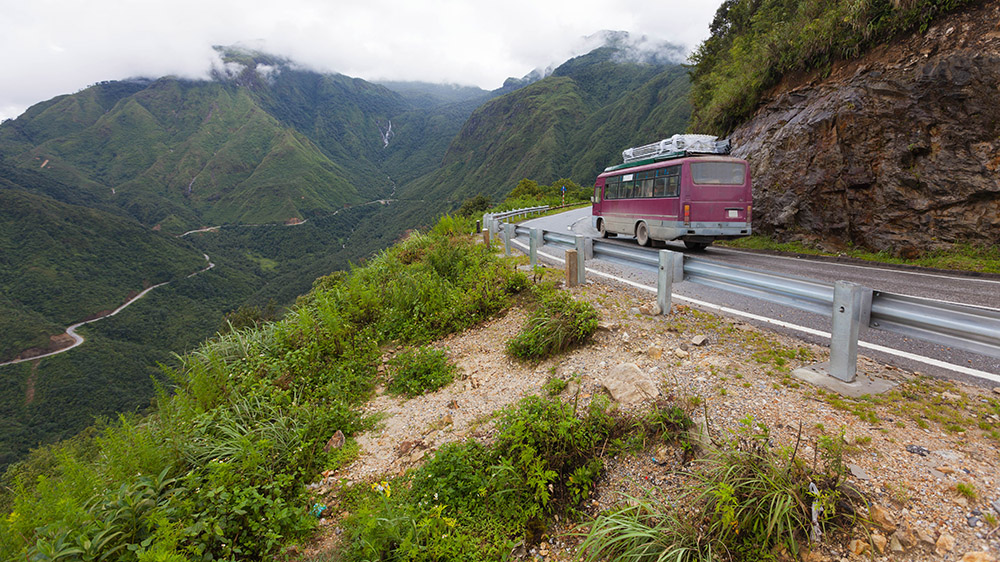
Hop-on-hop-off bus tickets
There are several operators selling hop-on-hop-off bus passes for Vietnam. This means you can travel the full length of the country (between Hanoi and Saigon) on one ticket while going in one direction, i.e. north or southbound.
Sounds convenient, right? Well, they might not always be worth it.
My travel buddies in Vietnam who used these tickets got quite frustrated with the limitations, as you’re reduced to using only one bus company and timetable. They were unable to switch to trains or minivans for particular legs of the journey where these would have been more convenient. So, hop-on-hop-off tickets can reduce your flexibility a lot.
I’ve always chosen to book my transportation one step at a time. Even if the hop-on-hop-off ticket is slightly cheaper overall, it’s not so great to have to lock yourself in. In my opinion, this makes them not really worth it.
Motorbiking in Vietnam
Although I love traveling Vietnam by bus and train, arguably the best way to explore Vietnam is by motorbike! The feeling of freedom you’ll get is amazing. You’ll also be able to go off the usual travel circuit, getting you much closer to the real country of Vietnam.
Many consider Vietnam among the best motorbiking countries in Southeast Asia. If you can ride a bike or scooter and want to know more, be sure to check out our in-depth guide to motorbiking Vietnam.
Some links may be affiliate links, meaning I may earn commission from products or services I recommend. For more, see site policies.
[ad_2]
Source link




More Stories
The Ultimate Work Desk Kit: From Eye Drops to Vicks Roll On
Essential Insights into Atlanta Insurance: Your Ultimate Guide
Transform Lives by Giving Plasma: A Comprehensive Guide